Renovating a standalone toilet takes more time, but offers a plethora of options: you don’t have to match the toilet’s design to the bathroom’s. This means you can create another uniquely stylish toilet.
What to use for toilet wall finishing?
Before selecting materials for the toilet wall finishing, let’s consider the characteristics they should have:
- Hygiene. In small bathrooms, frequent wet cleaning is often required, meaning the wall coating in the toilet should withstand even aggressive chemical action.
- Durability. To avoid changing the wall cladding in the toilet every 2-3 years, opt for the most long-lasting materials that will maintain their appearance for a long time.
- Water resistance. Of course, the humidity level here is much lower than in the bathroom. But contact with water is inevitable, so instead of paper wallpaper, for example, choose washable non-woven ones.
- Fungal protection. High humidity creates ideal conditions for mold growth, so protecting surfaces is a must.
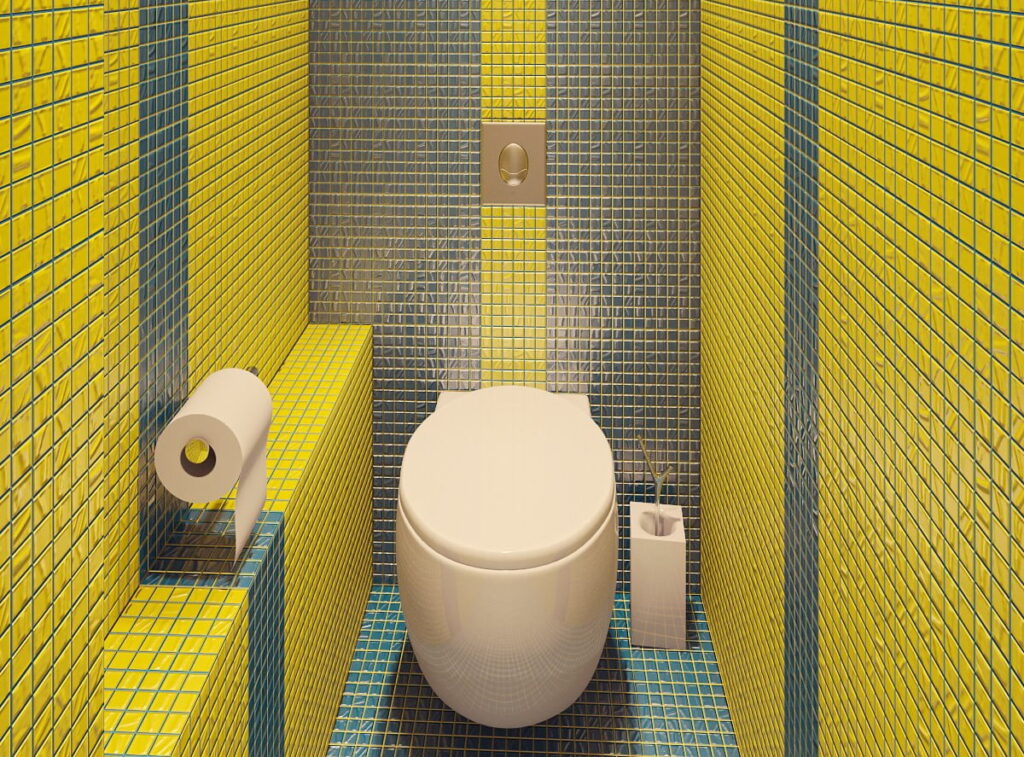
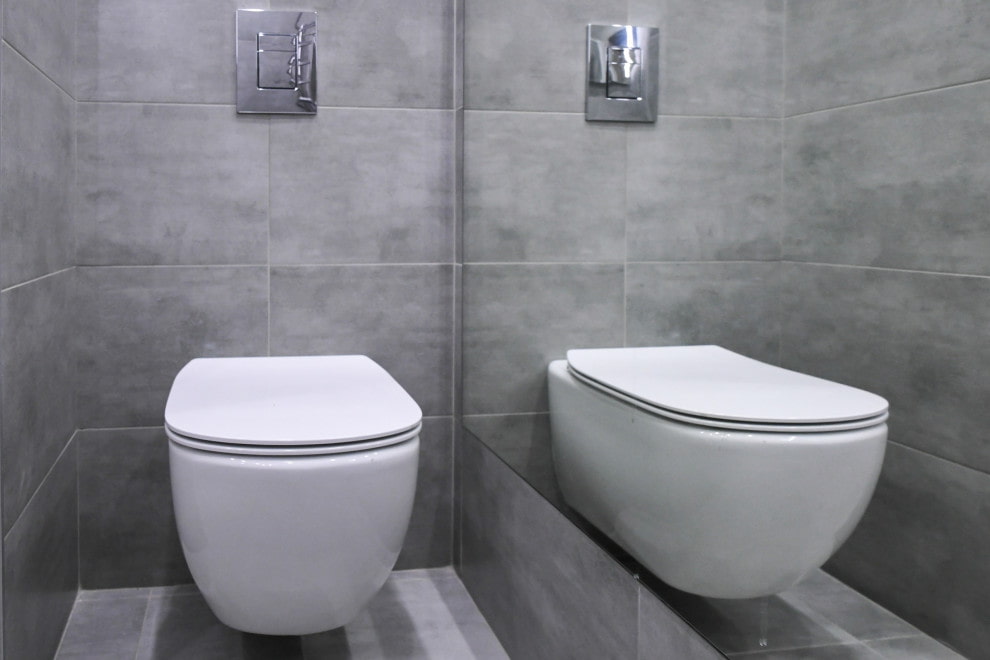
Tile
The first thing that comes to mind when choosing wall finishing in the toilet room is ceramic tile. Many apartment and house owners choose it for its variety of designs, durability, longevity, and easy maintenance.
However, this finishing material has drawbacks — relatively high cost, complexity of installation and dismantling. Moreover, such a finish is cold, which doesn’t align well with the comfort of a home.
How to choose and use tile, read in our article. And we will consider other materials for the toilet besides tile.
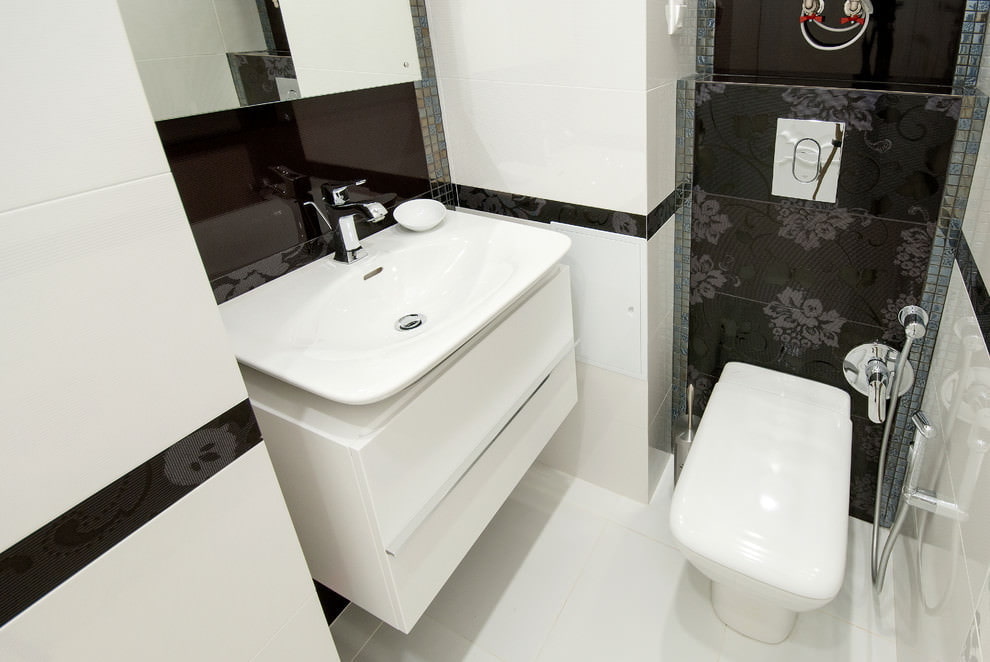
Plastic Panels
Plastic is one of the simplest and budget-friendly alternatives. It’s hygienic, easy to install, offers a variety of designs, and is inexpensive. Plus, you don’t have to spend time on leveling and preparation, the frame will hide all surface imperfections.
With plastic panels, you can make brick or wooden walls in the toilet, finishing under the tile or stone, or create a simple monochromatic smoothness.
But this finishing option also has disadvantages:
- First, the panels are installed on a lattice, which takes away 2-3 inches (5-7 cm) from the total area. Such luxury cannot be afforded in an already small space. But all the communications can easily be hidden in the box, which improves the appearance of the toilet thanks to the plastic finish.
- Second, cheap finishing materials often release toxic substances into the air, which can negatively affect the health of your family. Thirdly, most panels are fragile and easily damaged. But replacing a segment is not difficult.
- The last disadvantage — the likelihood of mold formation under the panels is quite high. Therefore, you will need treatment with high-quality agents.
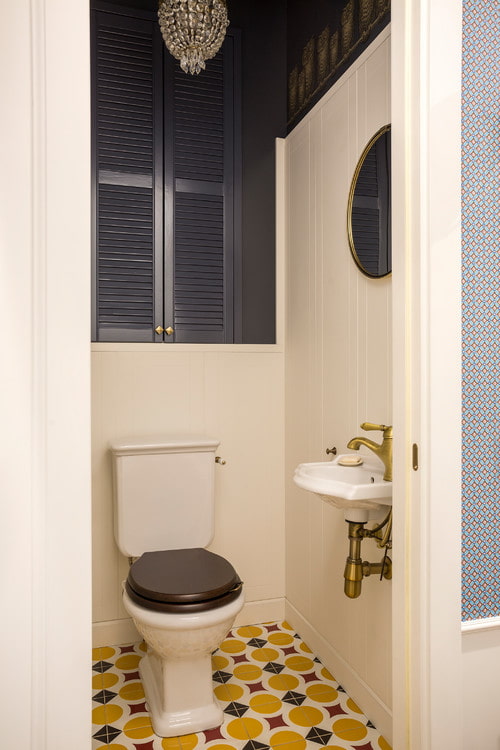
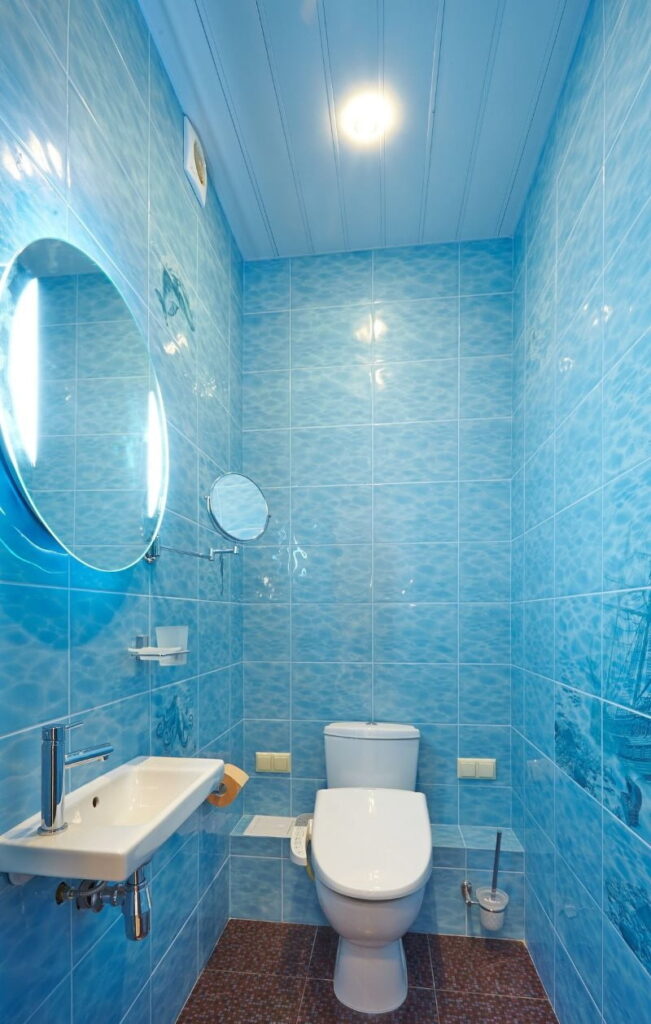
Wallpaper
Unlike a bathroom, wallpaper is a possible choice for toilet room decor. However, to avoid damage post-renovation, opt for moisture-resistant choices. For instance, vinyl, non-woven or liquid wallpaper.
Sometimes, decor is combined. The easiest way is to create a combination of two materials – wallpaper with ceramic tiles, lining or panels.
You can read more about the selection and application of wallpaper in the toilet room in another article.
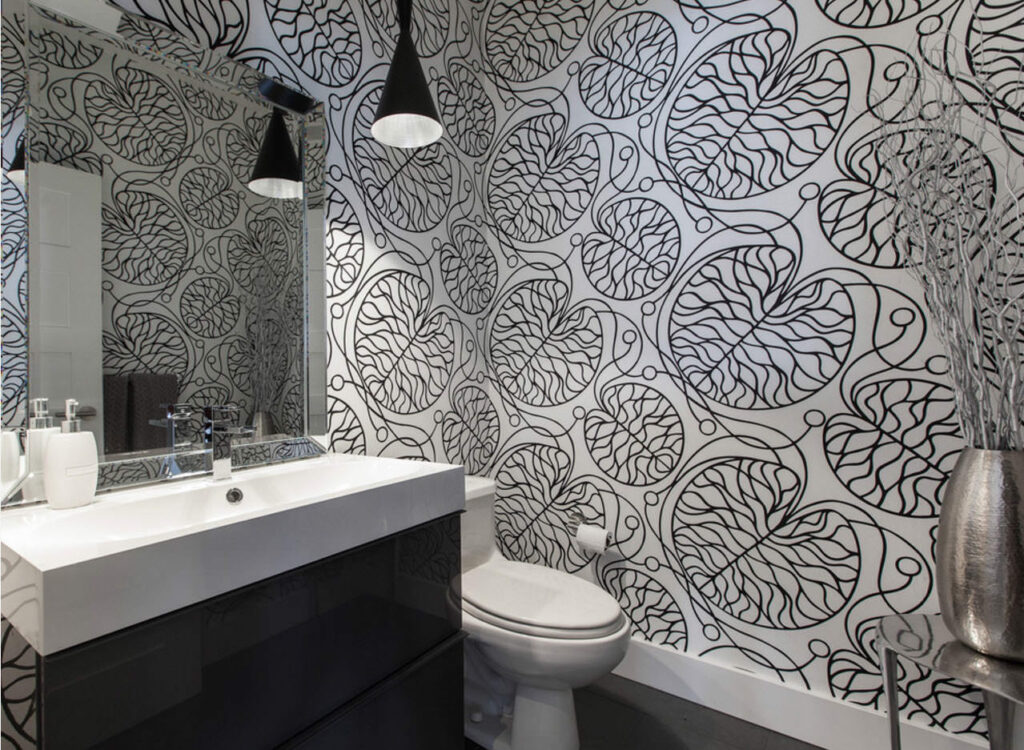
Painting Toilet Walls
Paints and lacquers are among the most popular and favored finishes. But for the final result to look truly good, you need to level the walls before decorating.
From a variety of paints and enamels, choose those resistant to moisture and wear. Usually, they are labeled as “for bathroom”, “washable” and so on. Such a coating, applied in a couple of layers, easily tolerates not only regular damp cleaning but also washing with aggressive compounds.
The color palette is absolutely unrestricted — order tinting in the store or mix the paint of the desired color yourself.
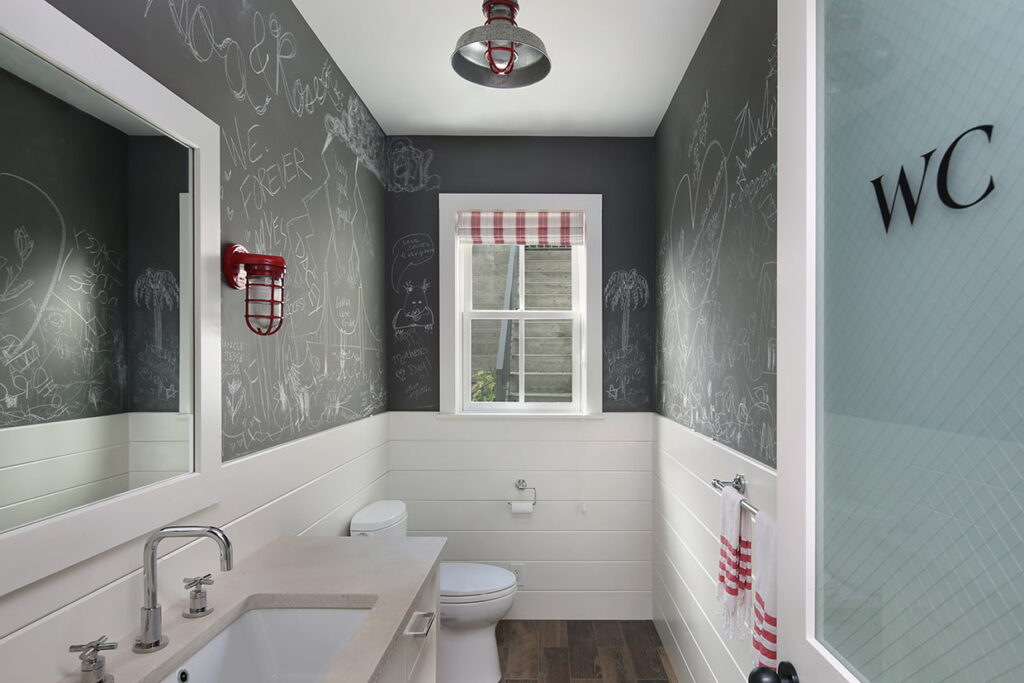
The photo shows an option for finishing toilet walls with chalkboard paint

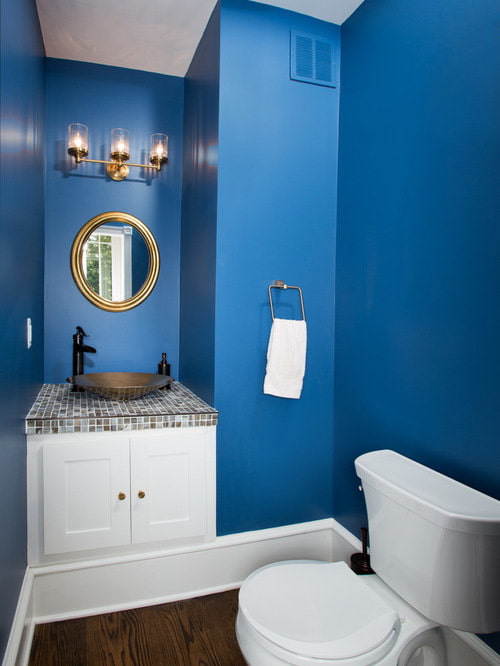
Monotone painting is often found in modern minimalist interiors, but if this decor option seems boring to you — combine it with other materials. For example, with tile, wallpaper or brickwork.
You can paint not only smooth plastered walls but also beam, lining, brick, and other textures.
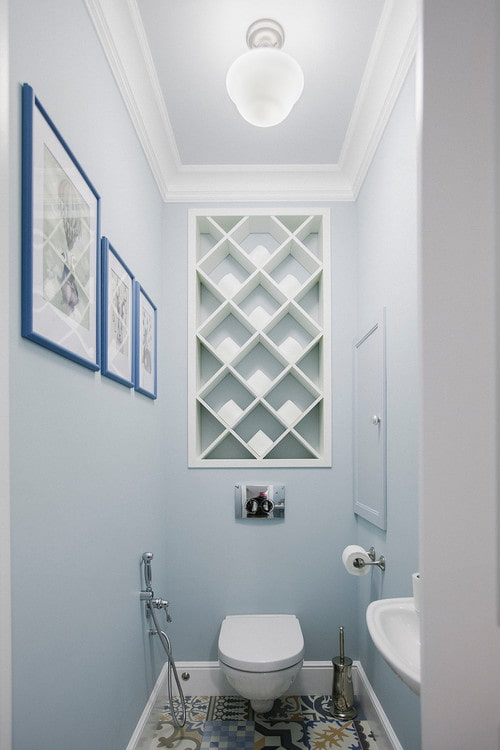
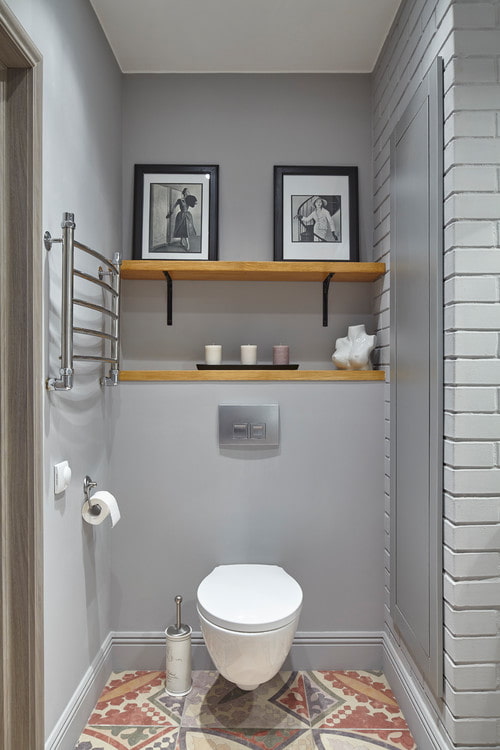
Paneling
If you’re a fan of the eco-style or simply love natural finishing materials — go for paneling. Wooden panels are warm, cozy and easily paintable — this allows diversifying the design of the toilet with a bowl.
The advantages of boards also include ease of finishing and durability — with proper treatment and care, the toilet renovation will last for many years.
Natural wood drawbacks include susceptibility to mold, insects, and odor absorption. But all of these are solvable with varnish, paint or impregnation.
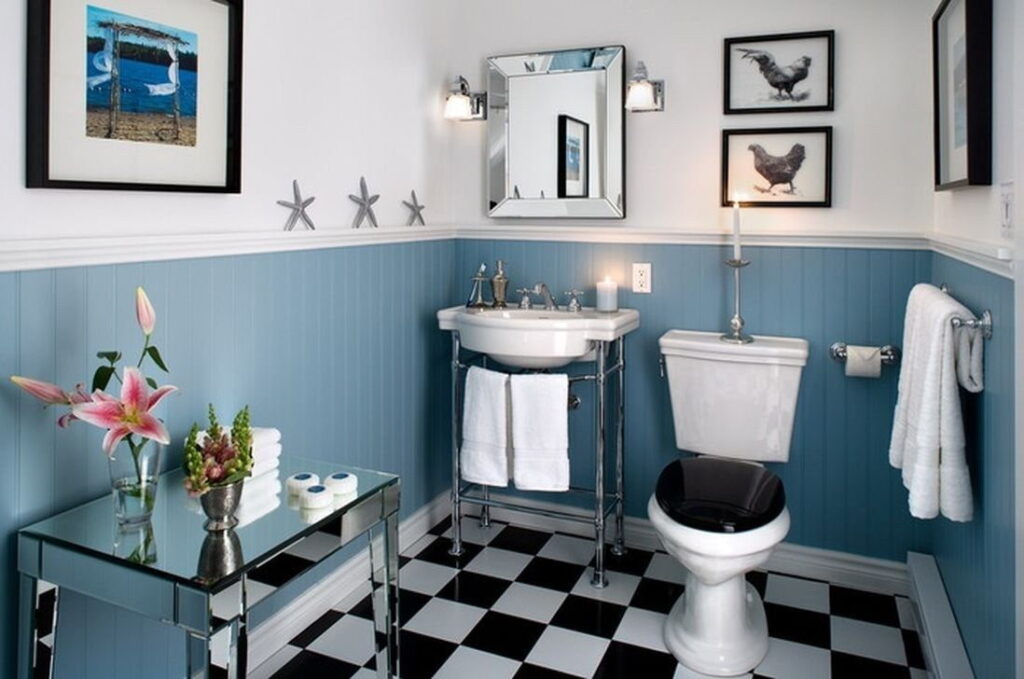
The photo shows the toilet wall decor with painted paneling.
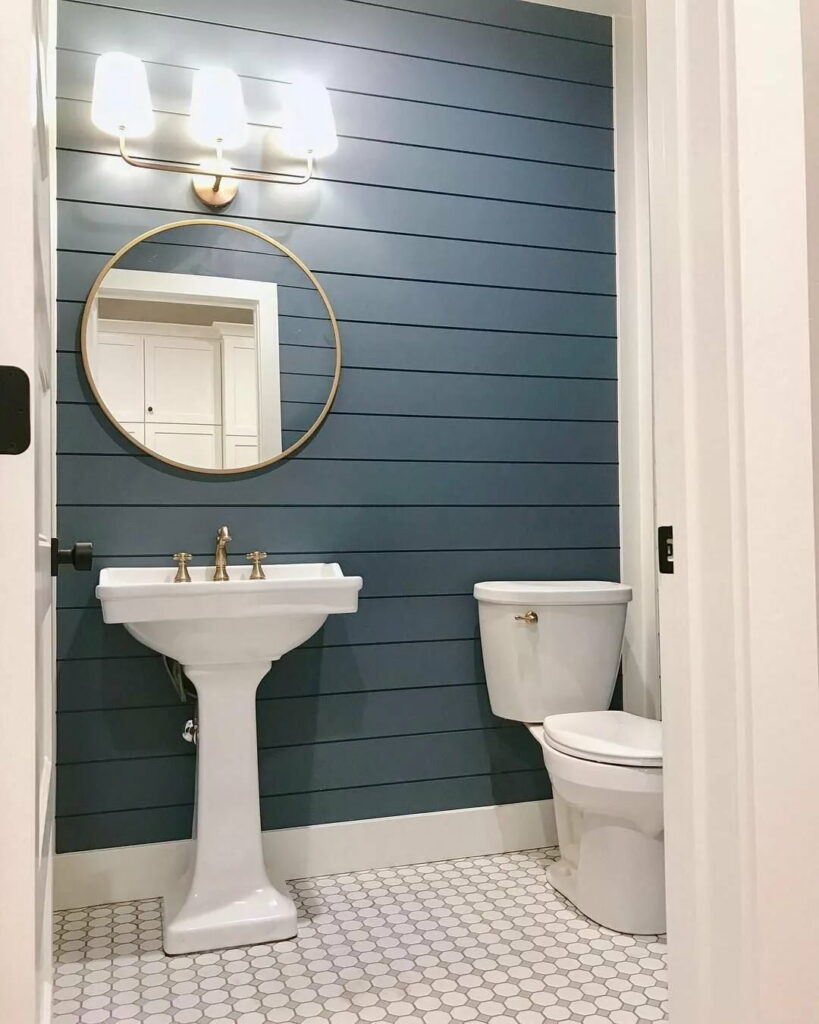
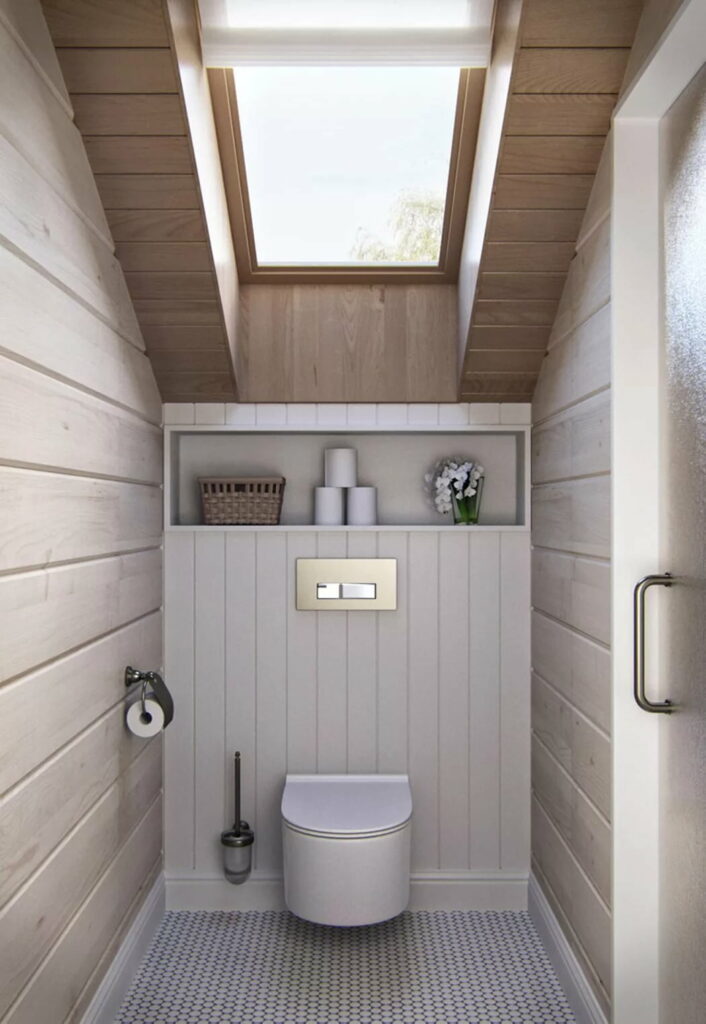
MDF Panels
Wooden paneling offers the same benefits as plastic: ease and speed of installation, reasonable price, and a wide range of designs. What’s more, thanks to their thickness, they’re sturdier, meaning it’s not easy to damage them. This also ensures enhanced sound and heat insulation.
The feature of butt joint installation and clip mounting allows the creation of a seamless wall surface – exactly what you need for a toilet finish.
One big downside of MDF is the lack of water resistance. In case of water exposure or constant high humidity, the panels will simply swell.
If you want to use them for wall cladding, look for options with special impregnations.
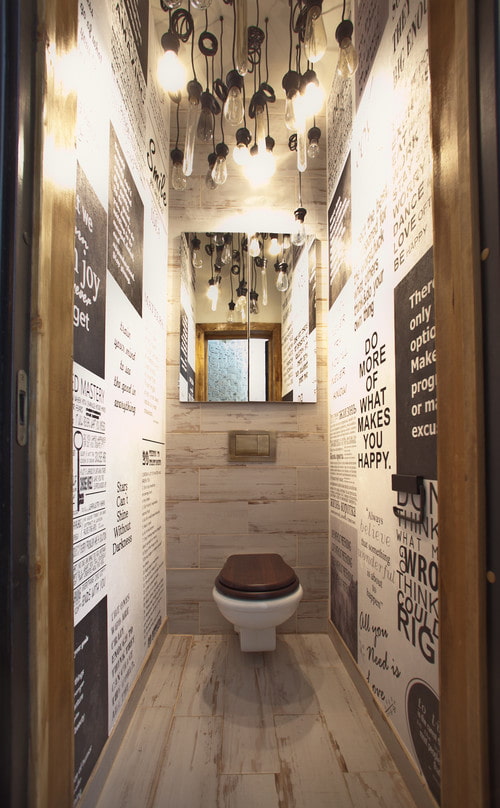
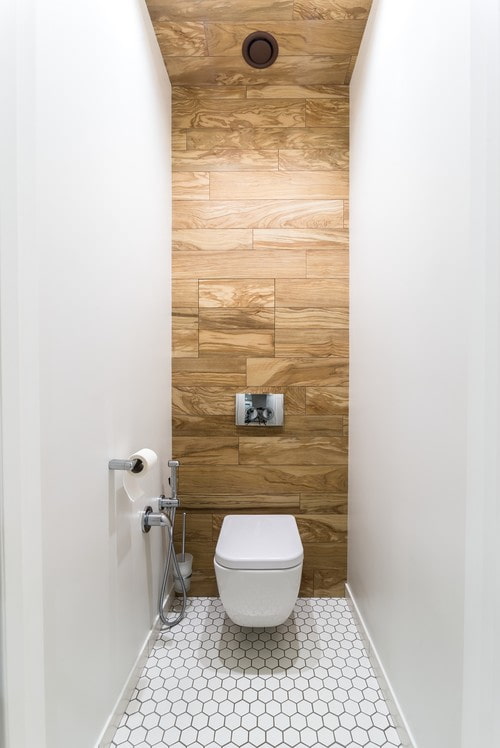
Decorative Plaster
The relatively new method of wall finishing using special texture pastes easily creates an amazing surface. For toilets and bathrooms, experts recommend synthetic compositions, as they resist the effects of moisture.
Applying plaster requires certain skills, but you can handle this task on your own. You can create a smooth coating, make decorative smears, imitate stone or wood. Depending on the finishing coating, the wall will turn out glossy or matte.
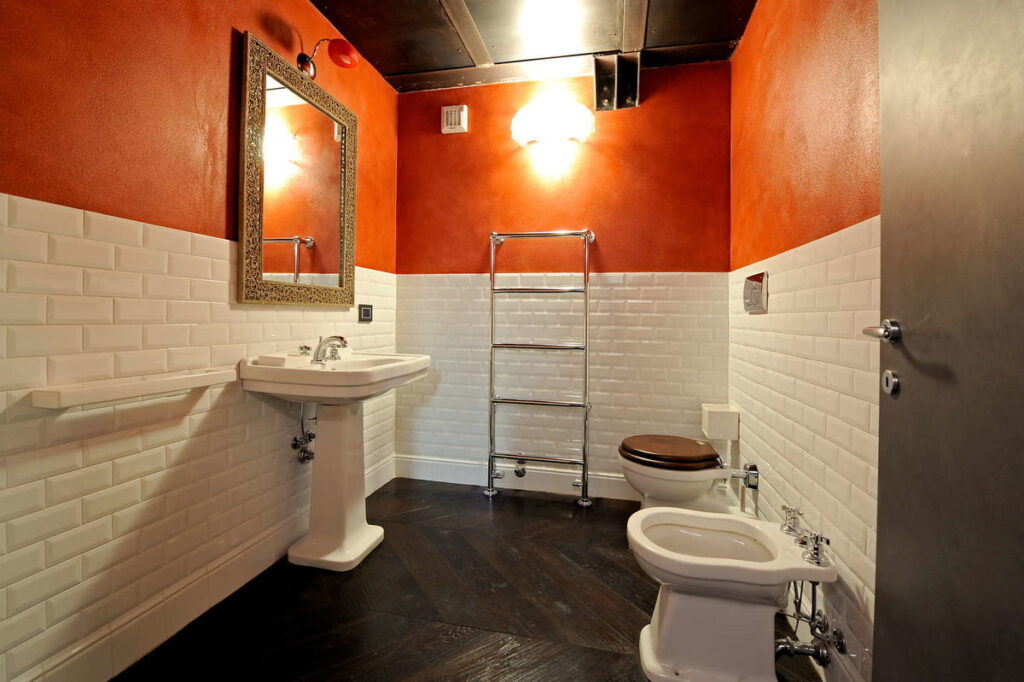
In the photo is a combination of finishing materials
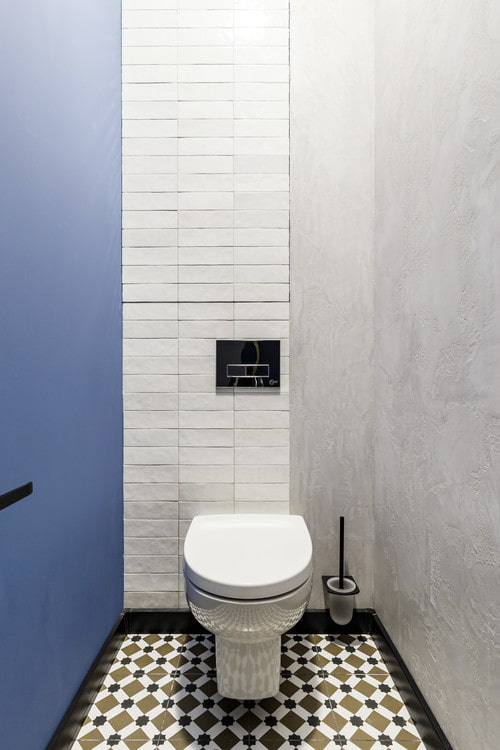
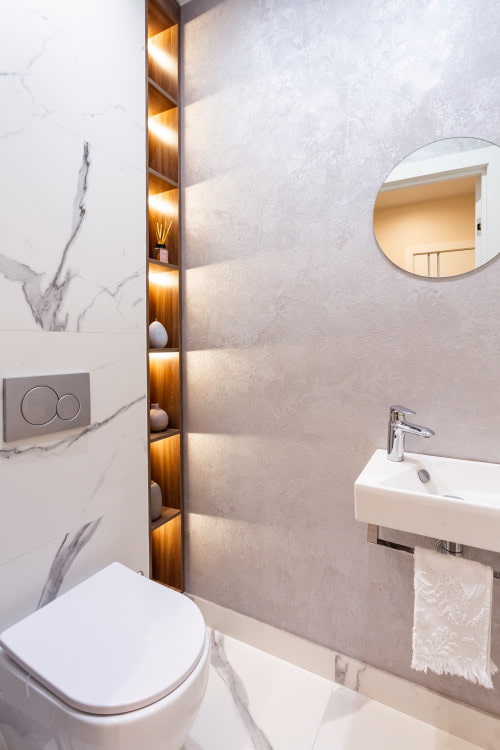
Decorative Stone or Brick
Artificial decorative stone doesn’t fall short of the natural counterpart in appearance but costs much less. The wear resistance and durability of this finishing material also compare with the expensive natural stone.
The choice of colors and textures of artificial stone is much wider. Another advantage is the ability to withstand dynamic loads without mechanical damage and cracks.
When asked what to finish the toilet with besides tile, stone comes to mind first. In its characteristics, it does not fall short of tile, and it even looks nobler and more expensive. Meanwhile, decorating the toilet won’t be more difficult than with tile – you can do it yourself or seek help from professionals.
An industrial alternative to stone is brick. Often, you don’t even need to imitate it, just clean the brick wall from plaster. Choosing this method of decoration, rest assured: brickwork never goes out of style.
You can leave the wall untreated, but to make it easier to care for, it’s better to cover it with a special varnish. This process nullifies the porous texture and the unsanitary nature of the material, allows you to wash it with anything.
Red brick doesn’t suit every interior, but you can easily paint it any shade: white, blue, black, and even pink. Light shades will expand the toilet.
If the walls of your bathroom aren’t brick or you don’t want to remove the plaster, you can mimic the brickwork in a few ways:
- Plaster and painter’s tape;
- Pigtail tile;
- Brick cut lengthwise;
- PVC or MDF panels.

The photo shows wall cladding with natural stone
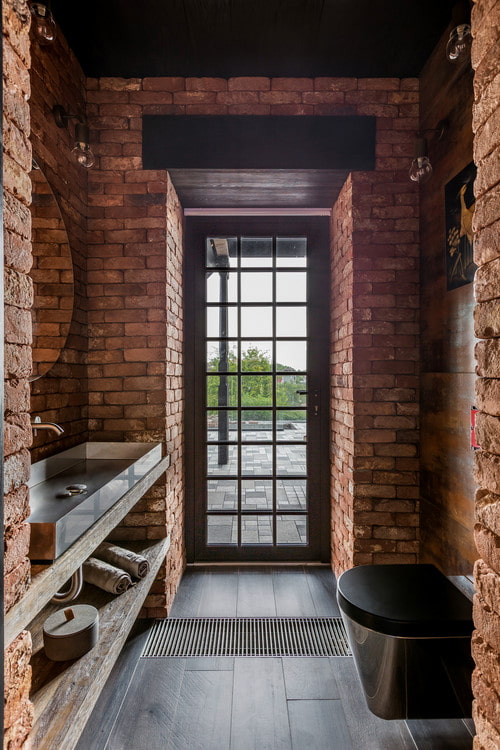
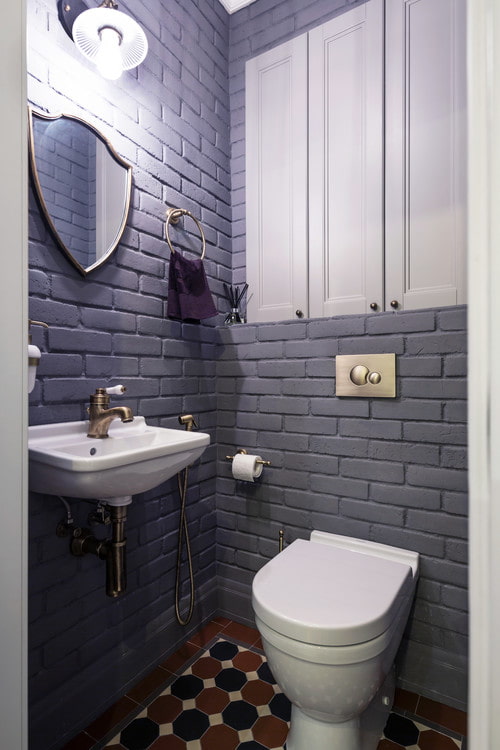
Concrete Wall
A loft-style toilet finish isn’t just brickwork and black pipes. Add another texture — concrete. As with the previous material, you can use the original wall texture by treating it with a protective agent. Or imitate it using:
- Microcement. They also call it decorative concrete. Essentially, it’s the same plaster, which when drying creates a perfect concrete texture. The benefits include high strength, the ability to apply to any surface (even drywall or tile), vapor and waterproofing. Plus, there won’t be any seams or joints on the wall, making it easier to maintain the finish.
- Tiles. Modern ceramics offer a multitude of textures, including concrete imitations. Such a toilet finish looks industrial and unusual while boasting the same advantages as any other tile.
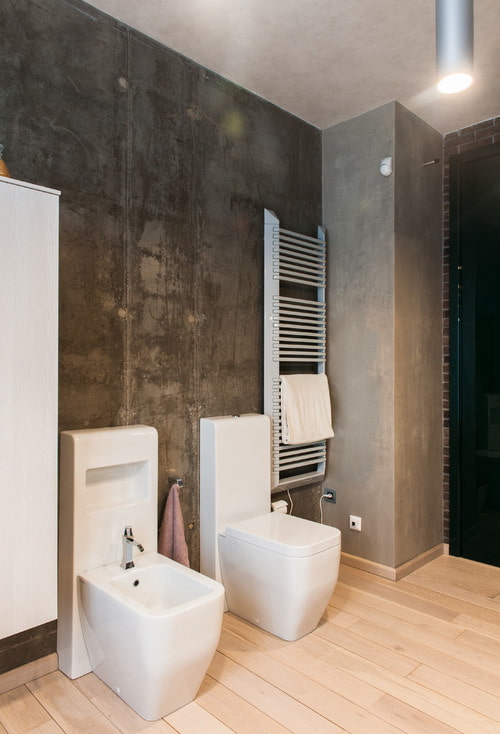

Which material should you choose for floor finishing?
The floor in the toilet withstands the most strain. Therefore, the material should be wear-resistant, protected from moisture, and easy to maintain. The most popular options are:
- Tile. Just like with walls, there’s nothing more optimal and universal. Often, people make the floor the focal point, using patchwork style tile, contrasting black and white layout, or creating a pattern from tiny mosaic.
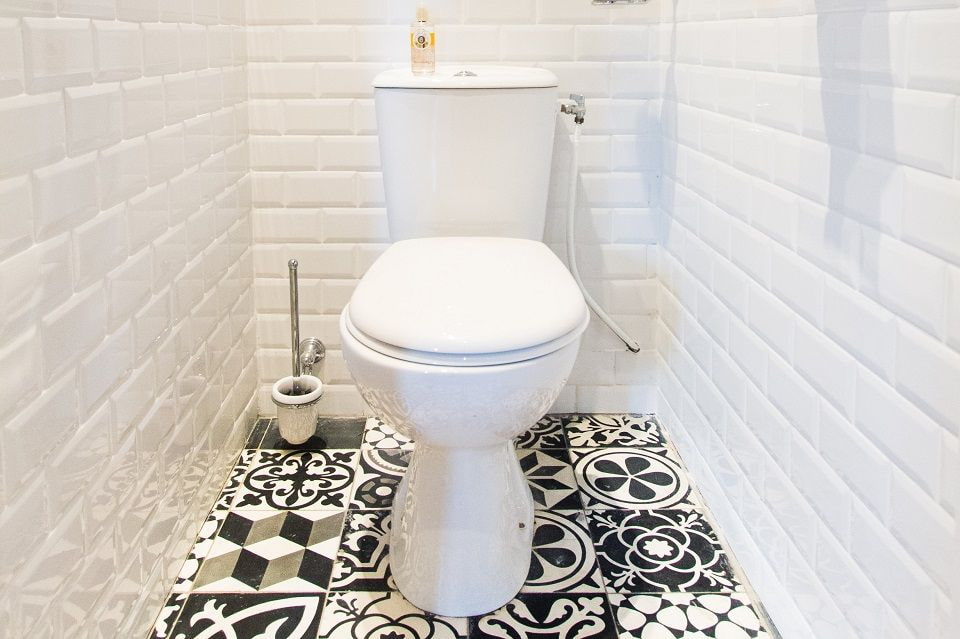
The photo shows toilet floor finishing with tile

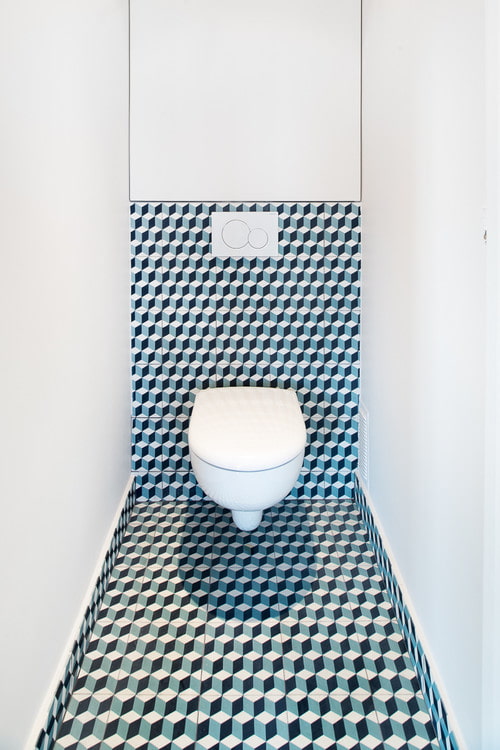
- Self-leveling floor. In terms of hygiene, it surpasses all counterparts due to the absence of seams and resistance to chemical effects. Finishing options are unlimited: from monochromatic to 3D images.
- Microcement. They use it to create a concrete floor, which is easy to keep clean. Thanks to the quartz in the mix, it’s almost impossible to damage or scratch such a floor.
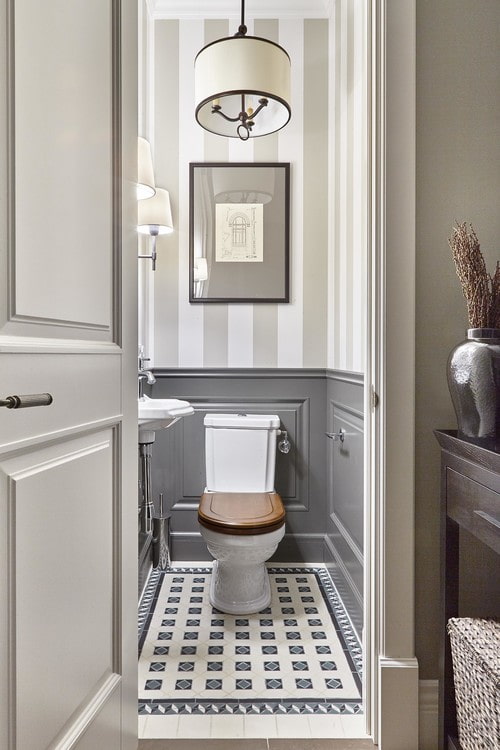
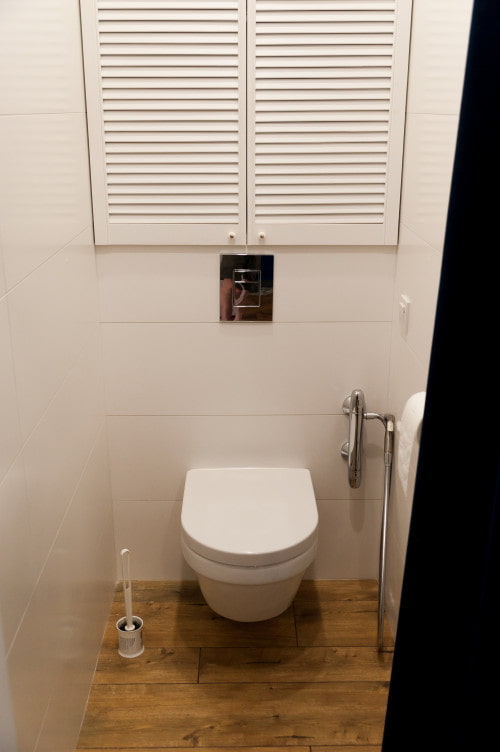
Ceiling Finishing Options
Ceiling finishing materials for the bathroom generally don’t differ from other rooms. They include:
- water-resistant paint;
- stretch ceiling;
- plastic panels;
- tongue and groove boards;
- washable wallpaper.
Read about the pros and cons of all materials in our article.
Renovation Examples for a Private House
In a wooden house, a wooden finish is an obvious choice, but the texture of wood in a small bathroom visually makes it even smaller. Therefore, this method suits only large bathrooms.
With painting logs or tongue and groove boards, you can achieve completely unexpected results: colored wood is still textured, but not as active. Moreover, colored wood, unlike natural, fits any interior style.
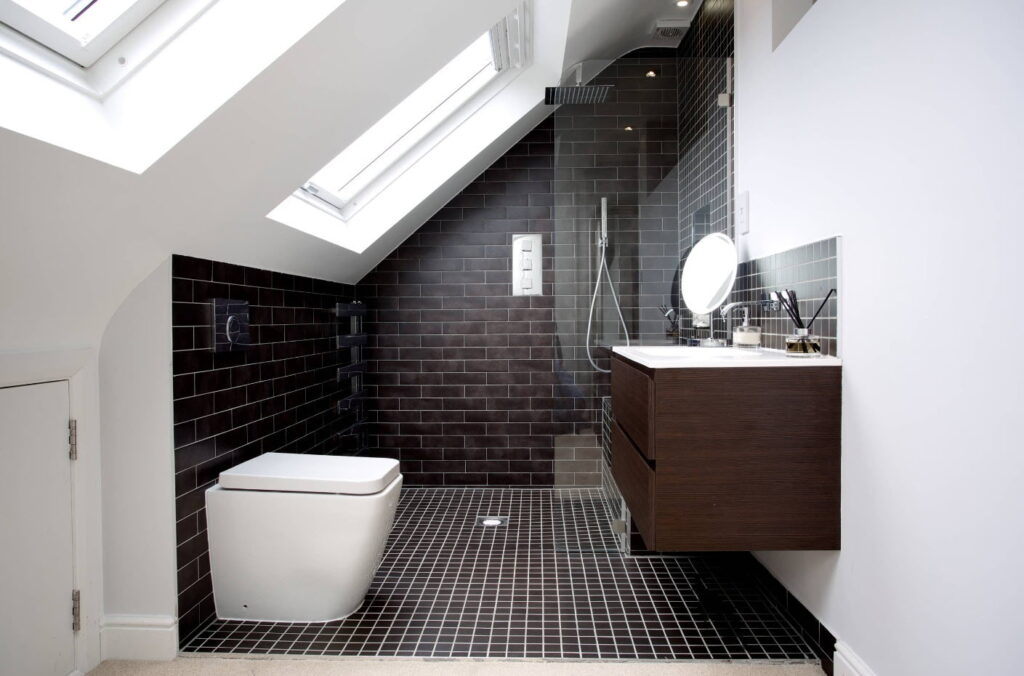
The photo shows tiling on the bathroom walls in the attic.

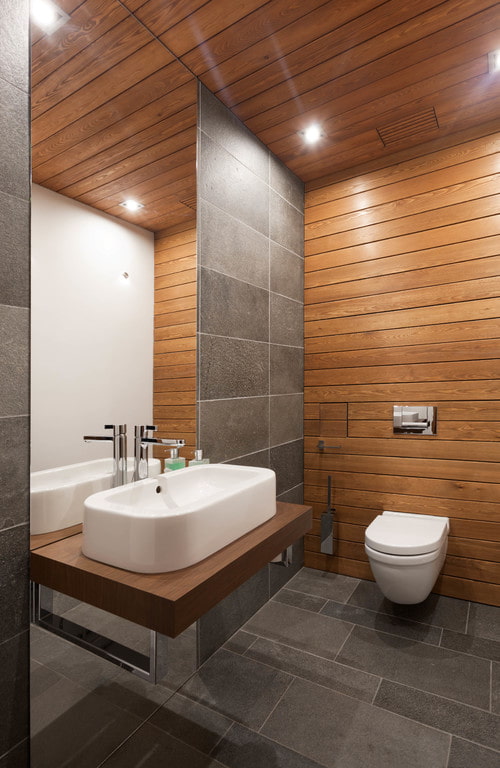
But wood isn’t the only option for finishing the bathroom. Use any options that suit your style: microcement, brick, tile, and plastic panels. In doing so, don’t ignore the recommendations for room sizes: they decorate a small bathroom in the lightest possible tones, using light materials. If the bathroom has a window, a darker color palette is available.
In country houses, a combined finish of tongue and groove boards with wallpaper or painted walls looks appropriate.
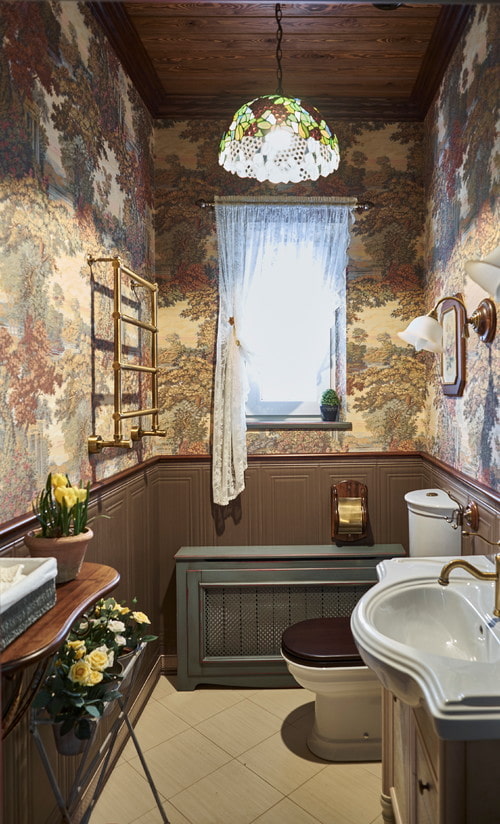
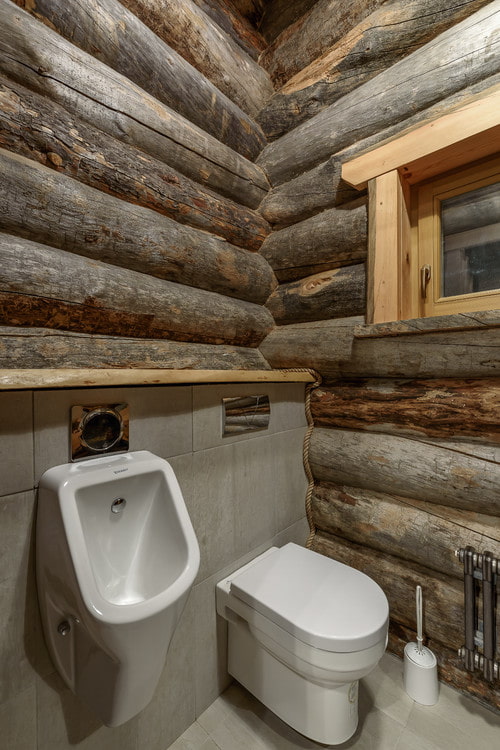
Photo Gallery
When choosing materials for finishing, consider not only style and budget, but also their properties. You should finish the bathroom with moisture-resistant and durable materials, they will last you much longer.
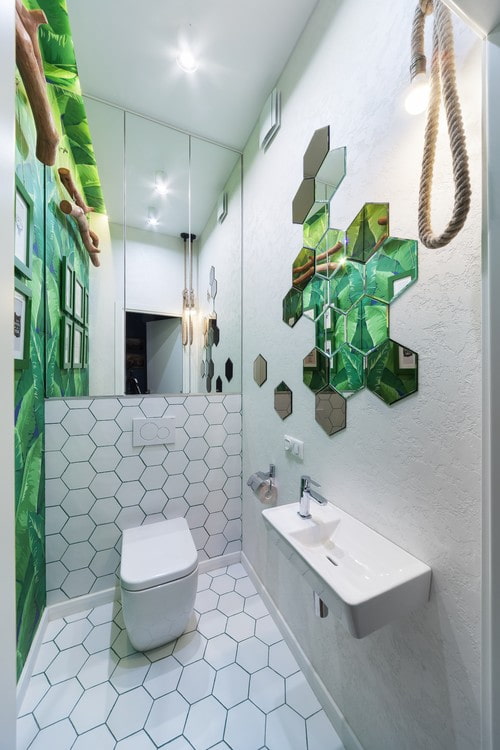
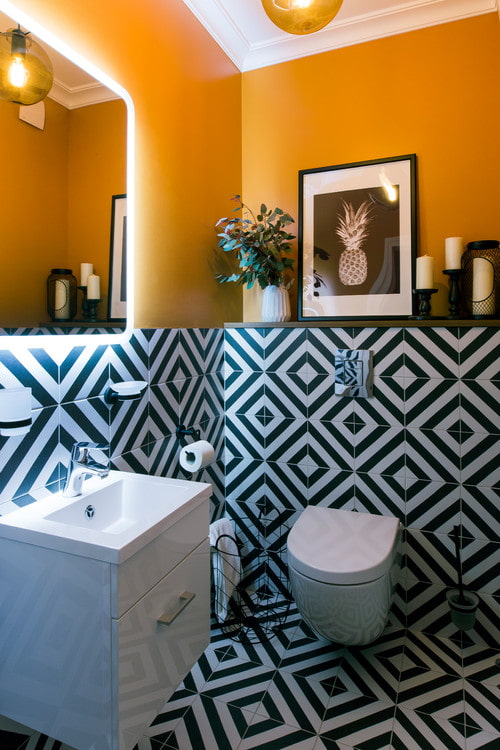
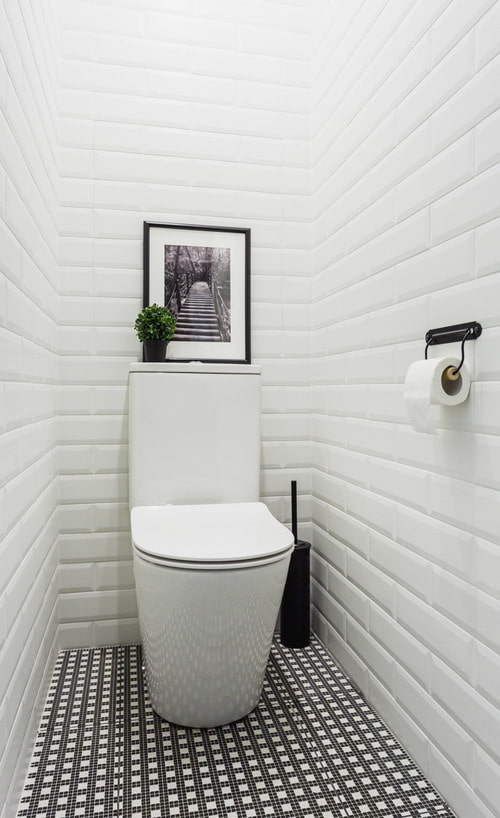
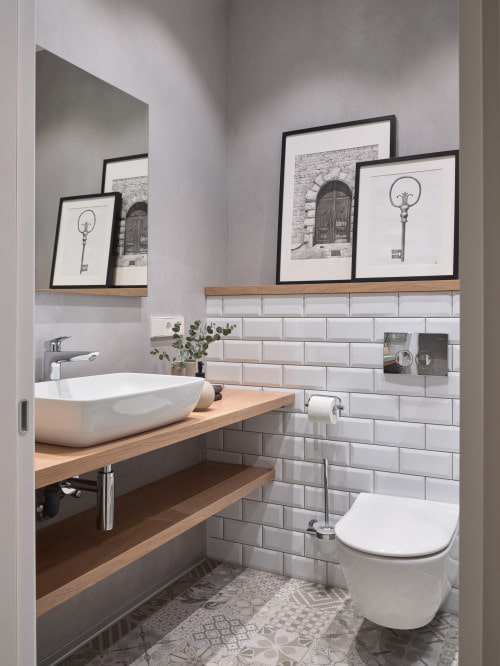
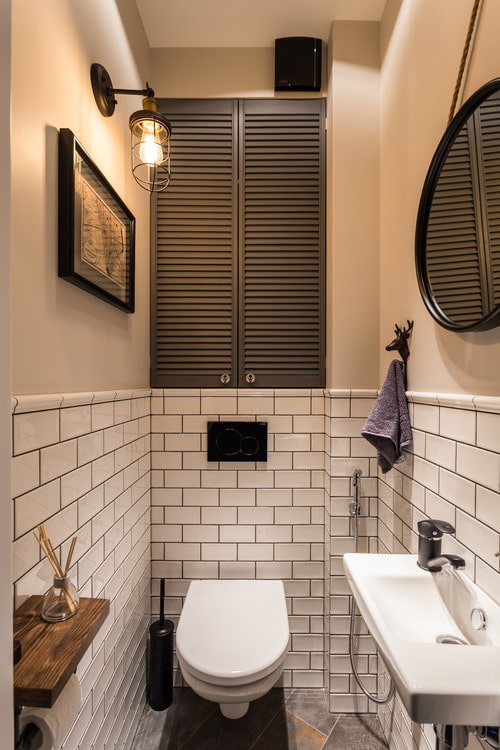

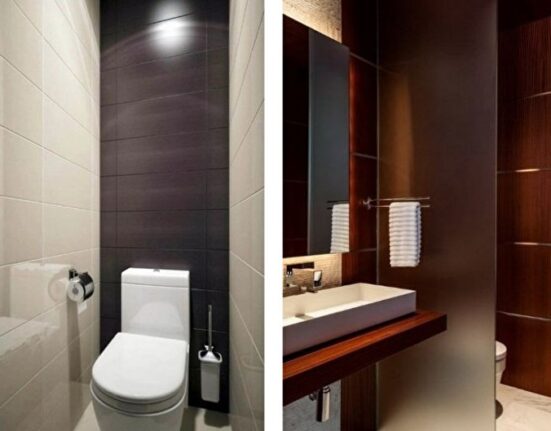
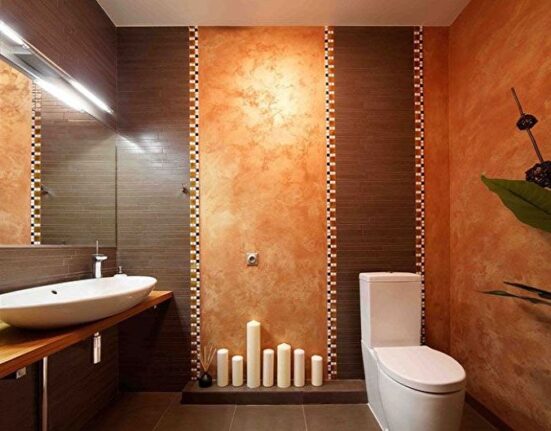

Leave feedback about this